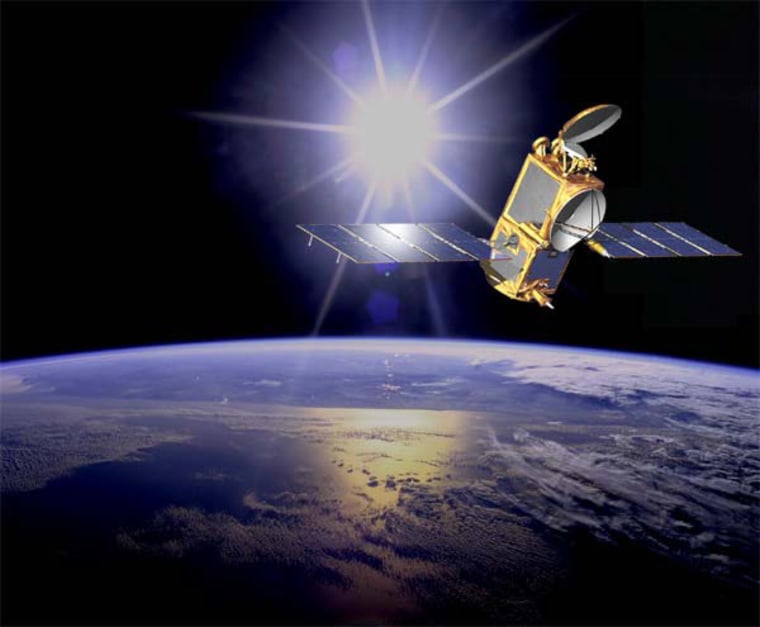The U.S. and France plan to launch a new satellite Friday to study rising sea levels on Earth.
The Jason 2 spacecraft is due to embark on an Ocean Surface Topography Mission (OSTM) to research changes in Earth's oceans and their links to global climate change.
The satellite is slated to launch June 20 at around 3:46 a.m. EDTatop a Delta 2 rocket from Vandenberg Air Force Base in California.
"I'm really happy to say the spacecraft is on the pad...and ready to go," said Parag Vaze, OSTM/Jason 2 Project Manager. "We're just waiting for the 20th to come along now."
NASA weather forecasters predict a mostly favorable forecast for the first launch attempt, and currently give the mission an 80 percent chance of launching on the first try.
The $433 million spacecraft is intended to pursue a joint mission along with the Jason 1 satellite already on orbit. That craft was launched in 2001 and has been monitoring Earth's seas ever since. Together the two satellites should be able to cover twice the area that Jason 1 could while operating alone.
Global sea levels have been rising about 0.12 inches (3 millimeters) per year since 1993, according to NASA. Scientists think these changes are largely due to the recent warming of the planet and of the seas, since warmer water takes up a larger volume. Melting land ice has also contributed to rising ocean levels, scientists said.
"The key objective of this mission is to measure the sea surface height on a global basis and of course to do it very, very accurately," said Parag Vaze, OSTM/Jason 2 Project Manager.
The spacecraft is designed to use onboard instruments to fire small pulses of light down to Earth and measure the time it takes for them to return, to deduce the distance between the satellite and the ocean surface to within a few centimeters.
"This is really quite a feat of engineering," said Eric Lindstrom, OSTM/Jason 2 program scientist. "Think about measuring the thickness of pieces of paper lying on the ground from the top of skyscrapers. It's pretty amazing stuff."
By creating a topographical map of Earth's oceans in this way, the spacecraft aims to gather data about global sea levels, the speed and direction of ocean currents and the heat stored in the ocean. The data could also be used to improve the accuracy of hurricane predictions, according to the National Oceanic and Atmospheric Administration (NOAA).
"This clearly is an important step forward in our ability to forecast hurricanes," said Laury Miller, chief scientist at the NOAA Laboratory for Satellite Altimetry.
Jason 2 is a collaboration between NASA and the French Space Agency (CNES), as well as NOAA and the European Meteorological Satellite Organization (EUMETSAT).
